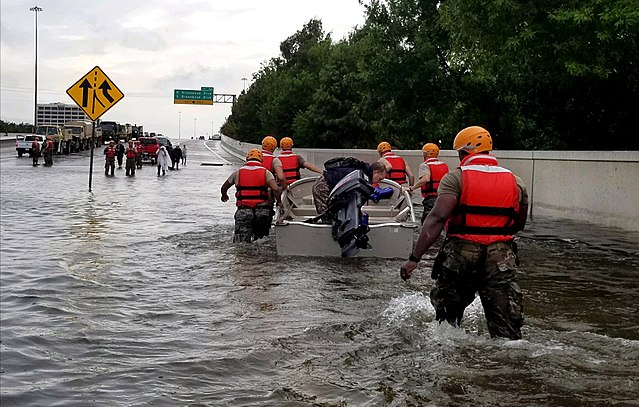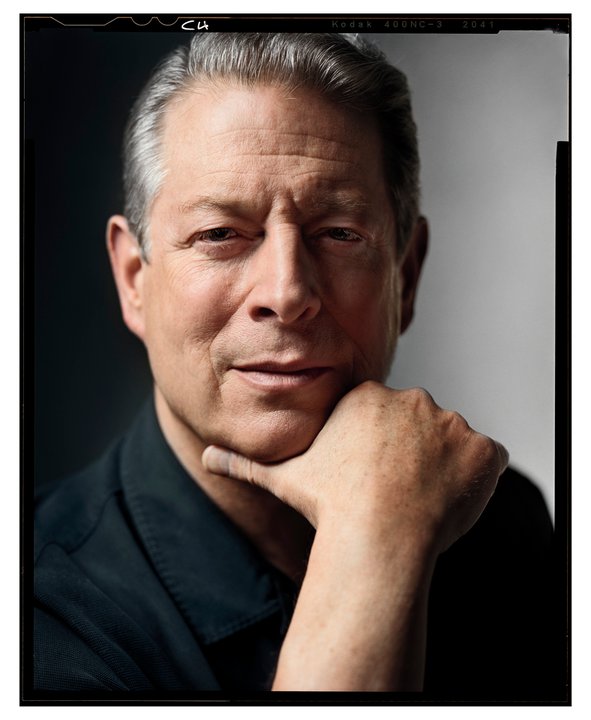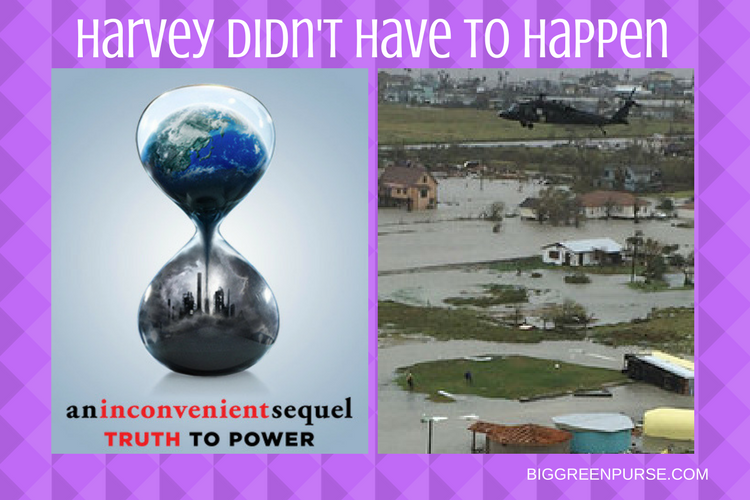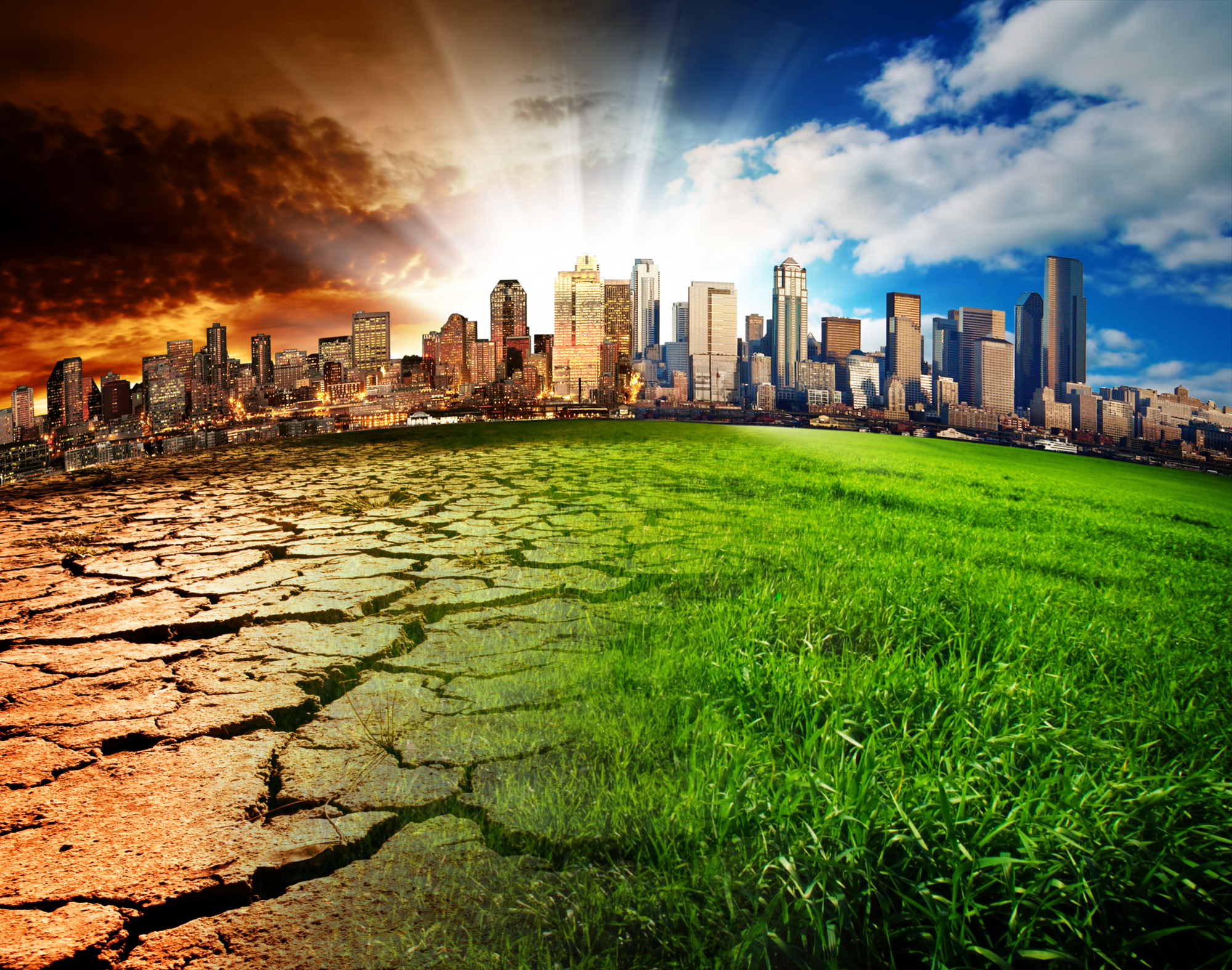Hurricane Harvey is not featured in Al Gore’s important new film, “An Inconvenient Sequel: Truth to Power.” Ten years ago, when the Nobel Prize winner made “An Inconvenient Truth,” his first movie about climate change, a storm the size of Harvey was still theoretical. And there still seemed to be time to reverse the catastrophic effects burning coal and oil causes by sending billions of tons of carbon dioxide into the atmosphere.
But as Harvey has shown, time is running out. And as Gore shows in this sequel to the original blockbuster, that’s not just true in the U.S., but all over the world.
Apart from understanding the forces – natural and man made – that turned Harvey into the worst storm America has ever experienced, “An Inconvenient Sequel” is worth watching for three riveting reasons.
Why “An Inconvenient Sequel” is Worth Watching
First, it lays bare the impact climate change is having on humanity.

In one of the most heartbreaking and powerful scenes in the film, workers in Pakistan, anticipating the hundreds and possibly thousands of people who will die from a coming extreme heat wave, dig early graves for the hundreds and possibly thousands of people who will die when the heat wave hits.
In another stunning clip, people in India can’t walk across the street without their hot shoes literally melting into the black top.
Footage of the spread of the Zika virus and the devastation caused by Superstorm Sandy all further illustrate that climate change impacts are no longer a matter of “if” but of “how bad?”
Second, the film depicts just how viable getting energy from solar and wind has become. Says Gore, “If you look at what’s really happening in the economy, the economic argument actually is very strongly in favor of the Paris Agreement,” the international accord that encourages every country on the planet, including the U.S., to voluntarily commit to reducing its greenhouse gas emissions.
There are now twice as many jobs in the solar industry as in the coal industry, Gore reports. “Solar jobs are growing 17 times faster than other jobs in the U.S…. It’s one of the brightest spots in our economic revival.”
The single fastest-growing job over the next ten years, says Gore citing Bureau of Labor Statistics data, is wind turbine technician. “If you take the efficiency jobs and the renewable energy jobs and add them together, they’re significantly more numerous now than all of the jobs in fossil energy,” he continues.

In the film, Gore visits Georgetown, Texas, “the reddest city in the reddest county in the reddest state” in the U.S., Mayor Dale Ross proudly reports. And yet, they’ve committed to going 100% renewable because it’s cleaner, more economical and the wave of the future.
Declares Mayor Ross, “The less junk you put in the air, the better.” Dohhh!
Third, Gore shows some of the inside workings that led to the unprecedented success of the Paris climate agreements. He does not mask his disdain for President Trump’s decision to withdraw the U.S. from those agreements.
Gore credits one unexpected actor with having a particularly outsized role in helping to convince the public that climate change is real: Mother Nature.
“Mother Nature has entered the debate,” he says, which is obvious in the wake of Hurricane Harvey.

“In the last seven years we’ve had 11 “One-in-1,000-year” downpours in the U.S. We have these floods, and droughts, and sea level rise events, and the melting ice, and tropical diseases. Every night now on the television news is like a nature hike through the book of Revelation.
“Even if some of the newscasters don’t connect the dots, people themselves are. People who don’t want to use the phrase “global warming” or “climate crisis” are saying, “Wait a minute. Something’s going on here that’s not right.”
“Mother Nature is persuading a lot of people who weren’t ready to believe what the scientists were saying.”

“What were you thinking?!!”
“Couldn’t you hear what Mother Nature was screaming at you?”
An Inconvenient Sequel starts off a bit slowly, with a long focus on Al Gore himself and his day-to-day work networking, advocating, and the workshops he still gives to train climate change activists to carry his message into their communities.
There also could have been a much bigger focus on energy efficiency as another important solution to climate change.
While people argue about whether to use coal or wind, no one should be debating insulating their homes, pumping up their tires, or reducing the energy that’s lost when power is produced so many hundreds of miles away from where it’s actually needed that it needs to be sent along transmission lines that leak power all along the route.
But those are minor objections. Overall, this film does a terrific job showing the human impact of climate change while convincingly making the case for solar and wind to become the dominant sources of electricity.
Plus, its calls to action, though few, are eminently achievable. In “An Inconvenient Truth,” so many suggestions rolled across the screen that even my eyes glazed over. And besides, how many lightbulbs can one person change?
The recommendation at the end of “Sequel” is solid and unequivocal: Convince your town to go 100% renewable.
Yes. Absolutely.
Says Gore: “If President Trump refuses to lead, the American People will.”
So follow the recommendation of the film’s hashtag and “#beinconvenient.”
Al Gore – and Mother Nature – expect no less.

















